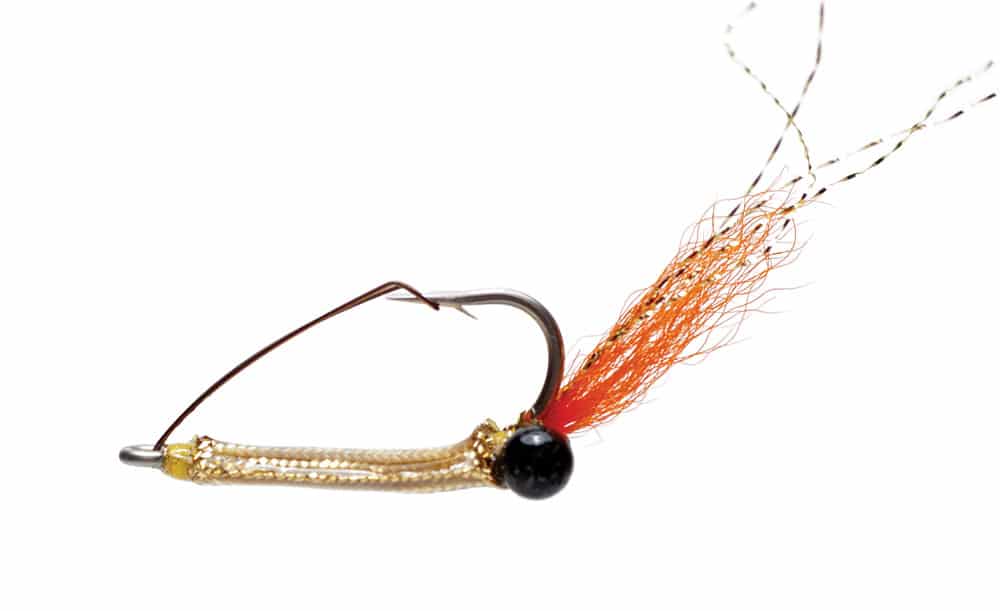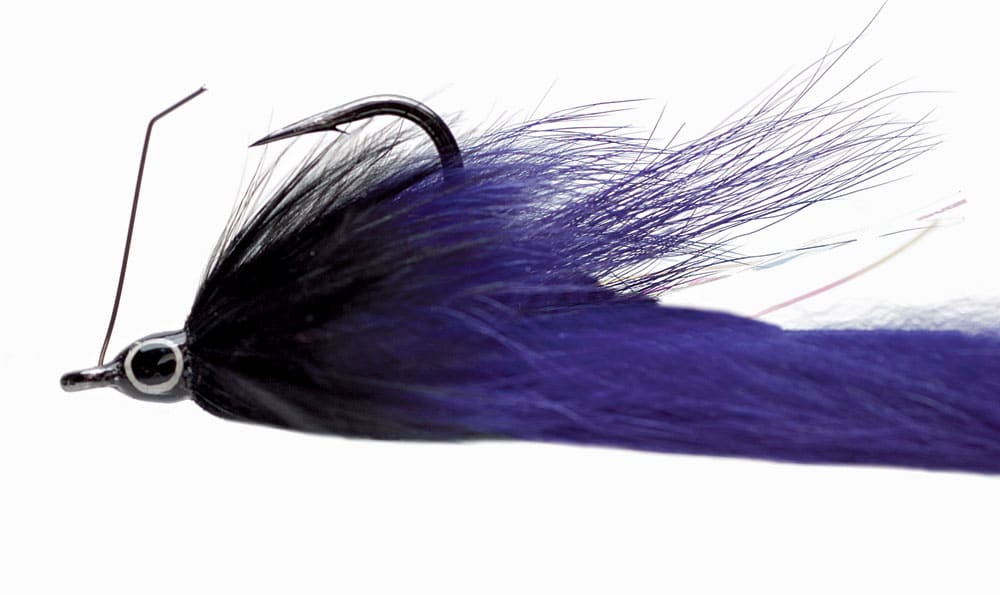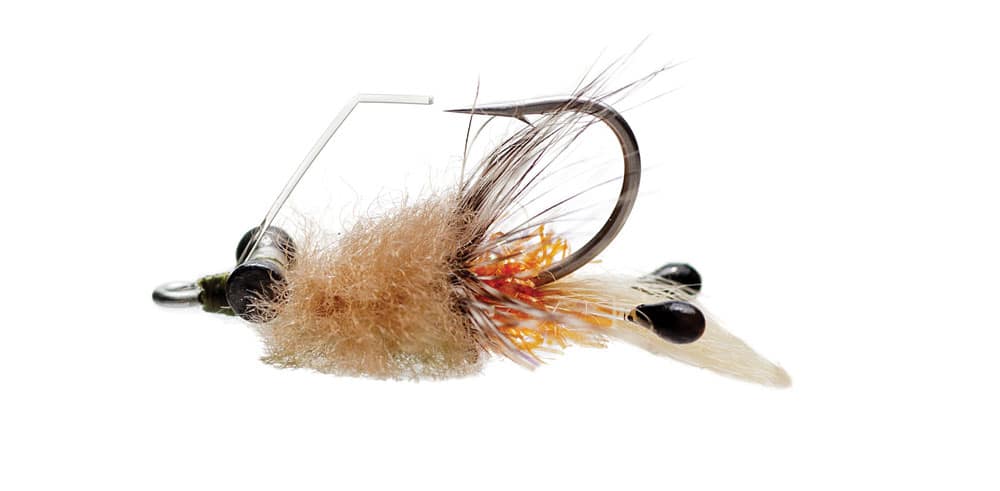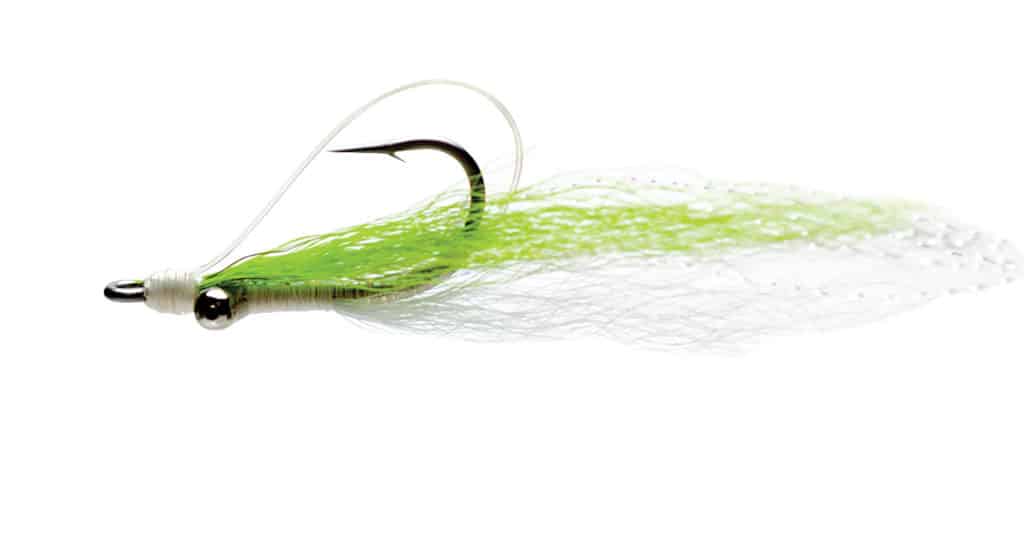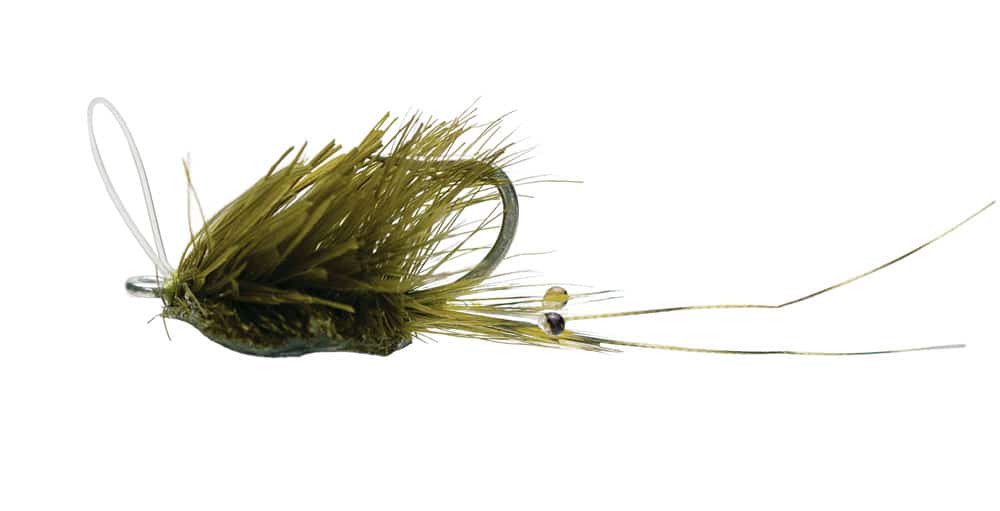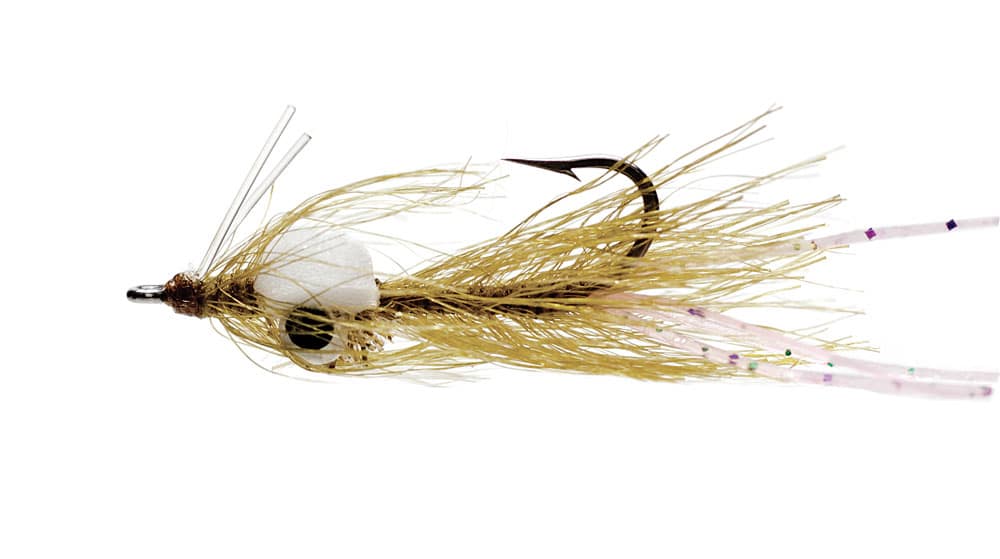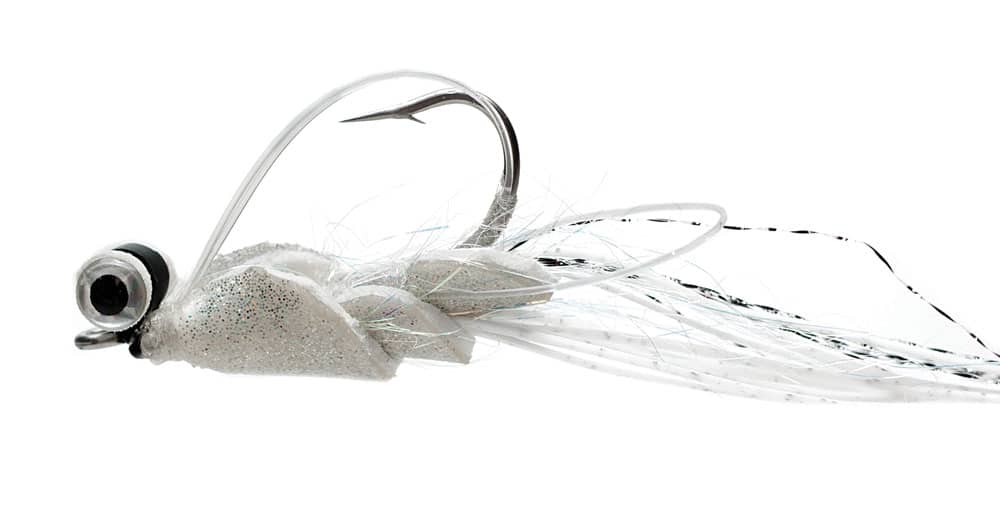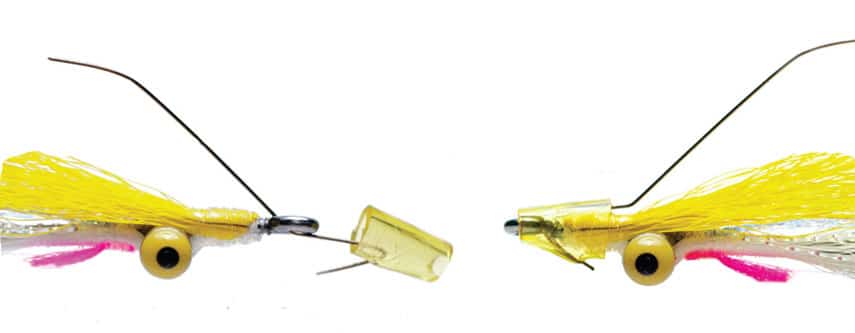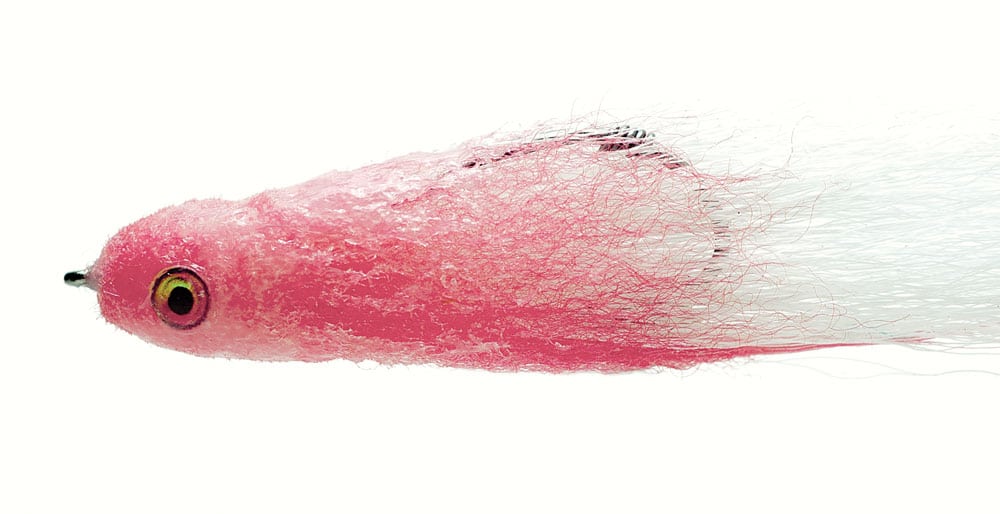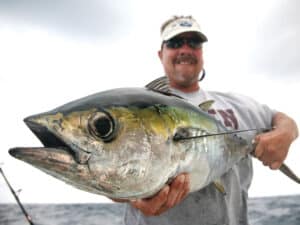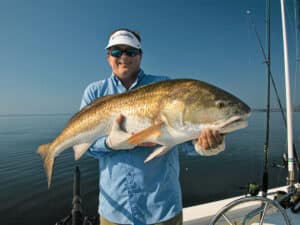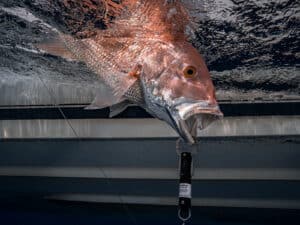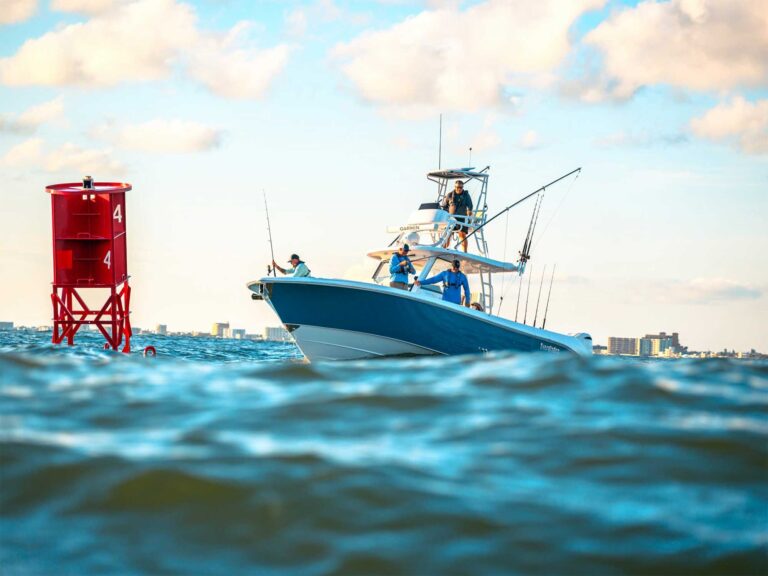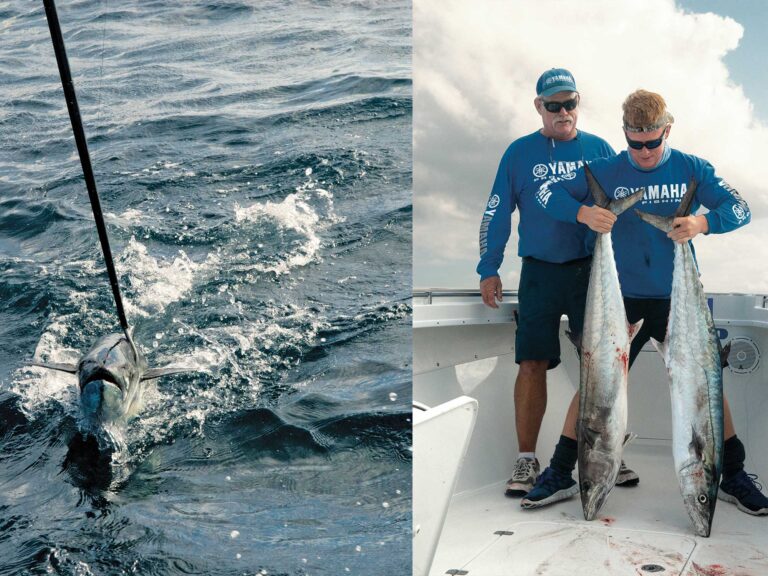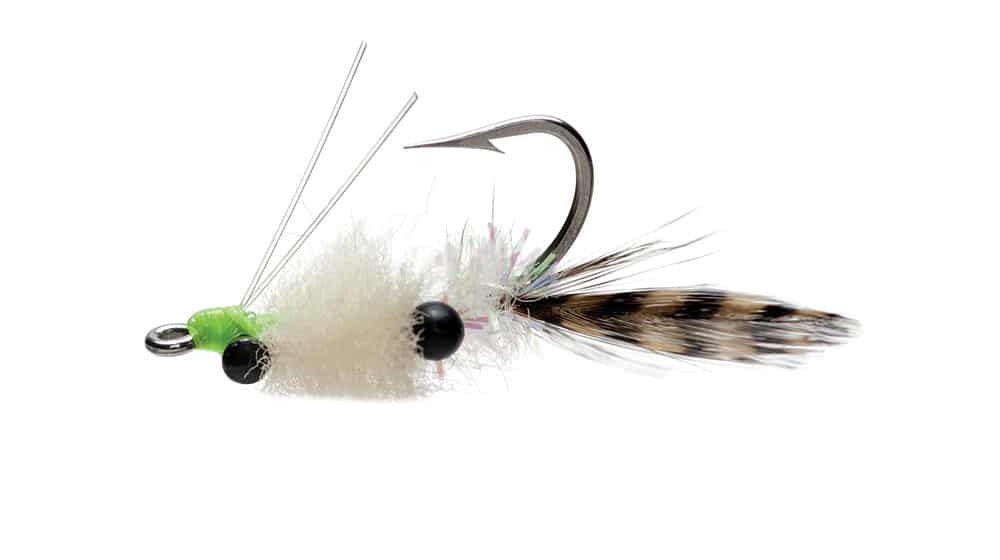
Weed Guard For Flies
I will never forget the weekend I drove with a friend from Stamford, Connecticut, to Cape Cod, Massachusetts, during the annual striped bass fall migration. It was sometime during the early ’90s, and we had high hopes that the fishing would be spectacular. It was my third weekend trip of the fall to find the huge schools of striped bass that were fattening up before heading south. The word was out that the fishing was red-hot on the outer beaches at High Head and Head of the Meadow. When we arrived at the beach at first light, I noticed that a pretty strong east wind was blowing and the water was filthy, with weeds in the wash. The fish were there in big numbers, and we did all we could to keep the weeds from fouling our flies. It was right then that I knew I had screwed up. I did not have one striper fly with a weed guard in my box. What could have been an epic day of fishing turned into a long and frustrating road trip.
Guard Material
Weed guards can be tied onto flies in a number of ways with either monofilament or single-strand wire. This wire’s biggest advantage is that it’s stiff and holds up well when being retrieved through muck. It can also easily be bent into shape and will continue to hold its shape once secured to the hook. Monofilament, while not as stiff as wire, is considered the more stealthy choice. It keeps fish from seeing the weed guard as easily as they would with wire. Taking things one step further, some folks have switched from hard mono to heavy fluorocarbon due to its invisible qualities in the water.
“Steel” the Deal
Wire weed guards are best used when you’re tying flies that are in the medium to large size range. For smaller bonefish-type flies, I would not recommend wire; mono is best for small flies. With steel single-strand wire, there are two basic methods to affix the weed guard to the fly. The first is to use a piece of single-strand wire (known as a spike) and lash it down just behind the hook eye, angling it toward the hook point. While this is a tried-and-true method of preventing debris from fouling a fly, a double-wire weed guard is preferred. This guard makes use of a piece of single-strand wire bent in half and into a V shape. Measure and bend the wire so that you can lash down the two tag ends of the wire behind the hook eye. The loop of wire will rest just barely on the point of the hook. This type of weed guard acts like a spring, so when a fish eats the fly, the wire guard will not impede the hook-set one bit. I prefer using 38-pound-test when tying a single-wire weed guard and 27-pound-test when using a double-wire weed guard.
“Mono a Mono”
When you’re tying in any monofilament weed guard, it is always best to flatten the mono first. Once flattened, the mono is easier to secure to the hook, and it won’t try to roll around. There are a plethora of monofilament weed guards from which to choose.
Tying in a single piece (or spike) of 30-pound-test monofilament just behind the hook eye so that it stands perpendicular to, or straight up on a 90-degree angle from, the hook shank is one way to create a simple weed guard. Another method is to angle toward the hook point a single piece of monofilament whose length is just short of the hook point. A third option for a mono-spike weed guard is to face the spike out and away from the hook eye. Tie it in as you would a reverse tie of materials on a fly. The spike angles out in front of the fly at about 45 degrees. Each of these styles also can be tied in as a single looped mono weed guard. This means tying in the two tag ends of one short piece of mono at the hook eye, thus forming a loop to keep any grass off the fly.
The last way to tie in a single piece of monofilament is to lash down a lengthy piece at the hook bend. You then loop it over (if the hook rides point up) or under (if the hook rides point down) the point of the hook and tie it in just at the hook eye. This creates a shield that should keep the hook point debris-free. This leads us to the debate on whether it is better to use a double-mono weed guard or a single-mono weed guard. Really, it’s a matter of personal preference. For tying a double-mono weed guard, cut a longer piece of mono and, after measuring out the necessary length, flatten the tag ends and lay them along each side of the hook bend. This forms a loop, which you then lay over or under (depending on which way the hook rides) the top of the hook point and secure at the hook eye. You now have a double-mono-loop weed guard that should keep your flies clean when stripped through any grassy area. Another way to secure a double-mono weed guard is to cut a longer piece of mono and, after measuring for length, flatten the tag ends and secure them to the sides of the hook shank up near the hook eye. The loop formed by securing the tag ends will rest at the point of the hook. These beefier double-mono weed guards should be used for fishing in the thickest of cover. In most instances, I myself still use a single-mono weed guard for keeping my flies clean.
